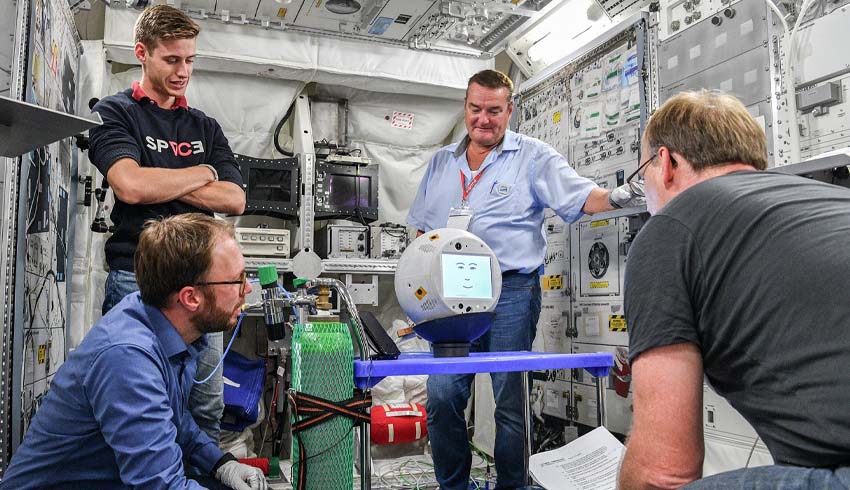
The SpaceX-18 undocked from the International Space Station (ISS) on 27 August 2019 at 16:59 central European summer time (CEST). The capsule then touched down in the Pacific Ocean around 480 kilometres south-west of Los Angeles.
Dr Christian Karrasch, CIMON project manager at the DLR Space Administration, said, "We expect to have the first CIMON back in Germany by the end of October. The CIMON technology experiment has lived up to all our expectations."
Developed and built in Germany, CIMON is a technology experiment to support astronauts and increase the efficiency of their work. CIMON is able to show and explain information and instructions for scientific experiments and repairs.
"During its first mission in space – a 90-minute session with German ESA astronaut Alexander Gerst on the ISS in November 2018 – CIMON demonstrated its ability to work well in micro-gravity conditions and to successfully interact with astronauts. We are still incredibly happy with the only artificial intelligence mission to take place on the space station to date, and have been working on a new, enhanced model for several months," Dr Karrasch said.
"The first CIMON has allowed us to lay the foundations for using social assistance systems in space – systems that support astronauts with their tasks and that at some point may even take some work off their hands."
The voice-controlled access to documents and media is an advantage, as the astronauts can keep both hands free. It can also be used as a mobile camera to save astronaut crew time. In particular, CIMON could be used to perform routine tasks, such as documenting experiments, searching for objects and taking inventory. CIMON can also see, hear, understand and speak.
CIMON can orientate itself using its ‘eyes’ – a stereo camera and a high-resolution camera that it uses for facial recognition – as well as two other cameras fitted to its sides that it uses for photos and video documentation. Ultrasound sensors measure distances to recognise potential collisions. Its ‘ears’ consist of eight microphones to identify directions, and an additional directional microphone to improve voice recognition. Its ‘mouth’ is a loudspeaker that it can use to speak or play music. At the heart of the AI for language understanding is the IBM Watson AI technology from the IBM Cloud.
CIMON has not been equipped with self-learning capabilities and requires active human instruction. The AI used for autonomous navigation was provided by Airbus and is designed for movement planning and object recognition. Twelve internal rotors allow CIMON to move and rotate freely in all directions. This means it can turn towards the astronaut when addressed, nod and shake its head, and follow the astronaut – either autonomously or on command.
"The new CIMON has an in-built switch that allows the flow of data from all cameras and microphones to be interrupted from the ISS. This means that the astronaut is in control of CIMON at all times, which we thought was particularly important," said LMU scientist Dr Judith Buchheim.
In 2018, the CIMON project won the US ‘Popular Science Award’ in the category ‘Best of What’s New in 2018’ in aerospace. Airbus was also awarded the ‘2019 German Innovation Prize’ (Deutsche Innovationspreis) in the large companies category.
Receive the latest developments and updates on Australia’s space industry direct to your inbox. Subscribe today to Space Connect here.









